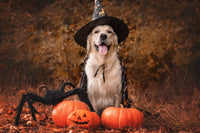Subtotal
CAD $0.00
or
Maybe you knew, or maybe you didn't, but all known dog breeds today owe their existence to the wolf.
From the wolf we also have another lesser known species called the Red Wolf. A complicated species, which some scientists today have trouble referring to as a separate species. Its origins resulted from lone wolves, who left their pack for one reason or another and mated with a coyote.
I mention all of this as we have yet another interesting new “species” which appears to be a combination of wolf, coyote, and domestic dog.
Enter the Coywolf. Seemingly right under our proverbial noses, this hybrid has emerged on the scene in startling numbers with some biologists calling it nothing short of amazing.
In the northeastern region of North America more than a century ago, the wolf as we know it was in trouble. Humans were altering their habitat through deforestation and creating new farmlands for themselves. This left the remaining wolves hard-pressed to find any other wolves, and as a result, they began to take notice of the coyote and the occasional farmer's dog with greater interest. I guess they liked what they saw.
Instead of a weaker offspring, what emerged was more advanced in seemingly every sense
said Dr. Roland Kays of North Carolina State University. Their physical traits are impressive, they weigh twice as much on average than a coyote and they are able to hunt deer and even bring down a moose due to their enlarged jaws, increased muscles, and very quick legs. Ecologist and evolutionary biologist Javier Monzon from Stony Brook University in New York currently residing at Pepperdine University in California, analyzed 437 coywolves DNA and “found the genes to be about 65 percent wolf, 25 percent coyote, and 10 percent dog.”
Beyond their physical attributes these animals are unlike any of the animals they represent individually. Coyotes are more public as far as their habitats, whereas wolves are more private, preferring forests. Coywolves can do both. They have sprung up in Boston, Washington DC, and New York City with the Gotham Coyote Project indicating there are roughly 20 coywolves in the greater New York area.
The unintended consequences of evolution; natural or otherwise, the Coywolf is here to stay. What they become and how we evolve with them is a story still left to be told.

Why Dogs Shouldn't Eat Turkey: Many turkey dishes include stuffing or gravy — both full of dog-unfriendly ingredients like onions, raisins, and butter. Even a “small taste” can expose your pup to toxic foods or trigger digestive distress.

Announcing the Winners of Our 2025 Pawsome Costume Contest!

The holidays are right around the corner — a time filled with friends, family, and festive chaos. But if your dog barks nonstop at visitors, delivery drivers, or even the sound of wrapping paper, it can quickly turn your joyful season into a noisy one.

How to Keep Racoons, Skunks, and Squirrels Away - Without Traps or Poison

Why Dogs Shouldn't Eat Turkey: What Every Pet Owner Should Know